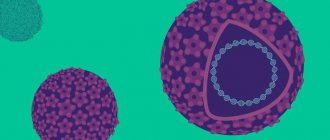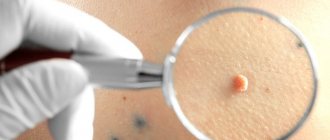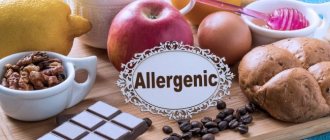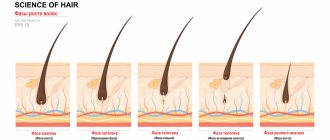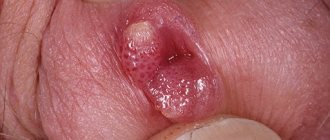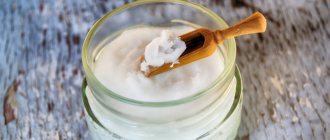General description of the disease
Bacterial or purulent arthritis is an inflammation of the joint caused by pyogenic bacteria. The disease begins acutely and progresses quickly, threatening the patient's life, and therefore requires emergency care.
Purulent (pyogenic) arthritis is a widespread phenomenon, the incidence ranges from 2 to 10 cases per 100 thousand population. According to statistics, from a quarter to a half of patients after such a purulent inflammatory process become disabled. About 5% of patients cannot be saved.
ICD 10 code(s) for pyogenic arthritis M00-M99. When an infectious pathogen of a certain type is identified, the ICD code is specified:
- staphylococcal - M00.0;
- pneumococcal - M00.1;
- caused by other specified bacterial pathogens - M00.8;
- unspecified purulent arthritis has an ICD 10 code - M00.9.
Causes of purulent arthritis
The cause of the disease is the penetration of pyogenic bacteria into the joint cavity. This can happen when:
- penetrating joint injury; in this case, the inflammatory process is initially aseptic (non-infectious) in nature and only after some time does suppuration develop;
- penetration of infection from periarticular tissues with abscesses, phlegmons, boils;
- transfer of infectious agents with blood or lymph flow from distant foci during purulent inflammatory processes in the ENT organs, purulent cholecystitis, appendicitis, etc.;
- infection entering the joint cavity during medical procedures if aseptic rules are not observed.
The most common causative agent of infection is Staphylococcus aureus (about 70% of all cases of pyogenic arthritis). In chronic autoimmune inflammatory processes (rheumatoid arthritis), skin infections and open injuries, the causative agent of purulent infection is most often group A hemolytic streptococcus. The “culprits” of the disease can be pneumococci, Pseudomonas aeruginosa and Escherichia coli and other pathogens.
When a pyogenic infection enters the joint cavity, suppuration develops. The joint capsule, cartilage, and then the periarticular tissues become inflamed and destroyed. At the site of destruction, first connective and then bone tissue grows, causing immobility of the joint (ankylosis). At the same time, the general condition of the body is disturbed, especially if pus enters the blood and spreads to various organs and tissues with the formation of pyogenic foci in them (sepsis).
People at risk for developing purulent arthritis include:
- children, elderly people, people with reduced immunity;
- those suffering from chronic arthritis, especially rheumatoid arthritis (RA) – the infection penetrates into inflamed tissue more easily; drugs used in the treatment of RA help reduce local immunity;
- with chronic inflammatory or acute purulent processes - pus enters the joint cavity with blood;
- those who have undergone joint surgery, including endoprosthetics - the incidence of infection of artificial joints ranges from 0.5 to 2%;
- with diabetes mellitus, which causes poor circulation and decreased immunity;
- obese people leading a sedentary lifestyle - increased load on the joints leads to the development of microtraumas, where infection easily penetrates;
- working in damp, cold rooms.
Is a diet necessary when treating a trophic ulcer?
What should be avoided if there is a trophic ulcer? Photos of complications will help you control yourself when dieting. Diet for trophic ulcers excludes salty foods and spices. It is necessary to saturate the body with nutrients, vitamins and Omega-3 acids. Vegetables (carrots, tomatoes, cabbage), fruits, nuts, milk, cheeses, vegetable and butter, and fish are especially useful. You should eat small portions to avoid a sharp increase in blood sugar. A radical change in diet is not required; a small adjustment will have a beneficial effect on the healing process.
Classification
By origin, purulent arthritis is divided into:
- primary
- infection enters the joint due to injury or as a result of medical operations or manipulations; - secondary
- pyogenic microorganisms enter the joint from nearby tissues or distant foci of infection with blood (lymph).
Suppurative arthritis of the knee joint
Based on the nature of changes in tissues, the following forms are distinguished:
- without destruction of intra-articular tissues; is possible only with timely and adequate treatment;
- with destruction of intra-articular tissues, confirmed by x-ray examination;
- with the spread of infection to the periarticular tissues.
Trophic ulcer - treatment in Moscow
Do you have a trophic ulcer? Treatment in Moscow or in any other city is quite lengthy and involves a whole range of measures to ensure that the trophic ulcer disappears. Conservative treatment, the same as drug treatment, is aimed at reducing the symptoms of the underlying disease that caused a violation of tissue trophism, treating the ulcerative lesion itself and fighting secondary infection.
Excellent results in laser treatment of trophic ulcers
Depending on the stage, the trophic ulcer is removed in different ways. Treatment (Moscow offers many methods) depends on the stage of development of the trophic ulcer and is carried out in the following areas:
- local treatment;
- elastic compression;
- drug treatment;
- hemosorption - removal of toxic tissue breakdown products from the blood;
- physiotherapy;
- autoirradiation of blood with laser or ultraviolet rays;
- surgical intervention if indicated;
- visiting sanatoriums.
What to do if you have deep trophic ulcers of the lower extremities? What to do if a large trophic ulcer, treatment (photo, results you have already assessed) which you have not carried out, increases?
Symptoms of purulent arthritis
It is very important to know all the manifestations of pyogenic arthritis, since not only the health, but also the life of the patient depends on the timeliness of seeking medical help.
First signs
Acute purulent arthritis in most cases begins suddenly, with high body temperature, chills, headache, and malaise. At the same time, redness (hyperemia) and swelling of the periarticular tissues above the affected joint appear, accompanied by severe pain. Usually one joint is affected, most often the hip or knee.
Subacute onset of the disease also occurs, but less frequently. The body temperature is normal or subfebrile (slightly elevated), and general disorders may include weakness and malaise. The joints swell slightly, but pain is always present. Inflammation in the hip and sacroiliac joints is especially difficult to notice. Often the process is initially aseptic in nature and only then do obvious symptoms of suppuration appear.
Multiple joint damage occurs when the patient has chronic arthritis, primarily rheumatoid arthritis (RA). Primary manifestations of pyogenic arthritis are rarely pronounced, since patients take anti-inflammatory drugs. In such patients, suppuration is rarely detected in the early stages.
All these signs can appear after endoprosthetics - replacing a destroyed joint with an artificial one. Suppuration can develop in the first 3 months after surgery or in a later period when infection enters the joint cavity from the surface of the skin or through the bloodstream from distant foci.
Obvious symptoms
Once pyogenic arthritis begins, it will not go away on its own; it will progress. Both general symptoms (fever, intoxication) and local ones increase: pain, redness and swelling over the inflamed joint. The patient cannot move the limb and takes a forced position, allowing him to somehow reduce the pain. If he does not receive medical assistance during this period, serious complications will begin.
In children, the hip joints are most often affected. Sometimes arthritis is acute, with severe general and local symptoms. But quite often the child simply feels pain in the limb when moving. The large volume of soft tissue over the hip joint makes it difficult to immediately see signs of inflammation.
Often purulent arthritis manifests itself only as pain in the limb when moving
When to see a doctor
Suppurative arthritis is a serious, life-threatening disease, so you should consult a doctor if the following symptoms appear:
- a sharp increase in body temperature combined with redness, swelling and pain in the joint area;
- inflammation of the joint after an injury, even a minor one; especially if the process is initially mild (aseptic inflammation), and after a while the temperature rises sharply, the joints swell, and unbearable pain appears (signs of suppuration);
- a slight increase or normal temperature, increased pain and inflammation in one or more joints in patients with chronic arthritis, especially RA;
- the appearance in a child of incomprehensible, sometimes not very strong pain in the joint when moving in the absence of fever and general disorders.
Trophic ulcer - symptoms
Trophic ulcers do not form spontaneously. Initially, swelling appears, accompanied by severe itching. The skin becomes thinner. Pigmentation or cyanosis appears.
Multiple trophic ulcers on the leg
The appearance of a trophic ulcer is often accompanied by chills and night cramps of the calf muscles. Due to stagnation in the lymphatic vessels, droplets of liquid begin to appear on the glassy surface of the skin. Next, the foci of exfoliated epidermis merge, and an ulcer with ragged, compacted edges is formed, causing severe pain at the slightest touch. As a rule, the ulcer surface is quickly colonized by bacteria, and the bleeding ulcer begins to fester.
How dangerous is the disease?
The course of the pyogenic inflammatory process in the joints depends on the virulence (ability to cause harm to the patient’s body) of the infectious agent, the state of the patient’s immunity, and the presence of chronic diseases. Without treatment, the disease progresses in any case, moving from stage to stage with joint destruction and severe complications.
Stages
Stages of pyogenic arthritis according to the Research Institute named after. Vishnevsky:
- Early
– pus accumulates in the joint cavity without destroying its tissues (on x-rays, an expansion of the joint space appears due to the accumulation of purulent exudate):- 1a
- tissues adjacent to the joint are not changed; - 1b
– purulent inflammation around the joint. - Explicit
– intra-articular tissues (synovium, cartilage, ligaments) are destroyed (on x-ray - destruction of the articular surfaces of bones):- 2a
- without damage to periarticular tissues; - 2b
– suppuration spreads to surrounding tissues. - Progressive
– cartilage and subchondral bone are destroyed (on x-ray – focal bone destruction, narrowing of the joint space), joint mobility is impaired:- 3a
- without damage to the skin and subcutaneous tissue surrounding the joint; - 3b
– ulcers around the joint; - 3c
– fistulas (pus breakthrough) on the surface of the skin. - Ultimate
:- if left untreated
, destruction, ankylosis (immobility) of the joint, disability; It is possible to restore joint function only with the help of endoprosthetics; - If treatment is carried out in a timely manner
, a complete recovery is possible.
Possible complications
Any form of arthritis has serious complications, so you should not delay treatment.
See how easily the disease can be cured in 10-12 sessions.
If left untreated, suppurative processes lead to severe complications:
- complete destruction and immobility of the joint;
- spread of suppuration to the skin, subcutaneous tissue, ligaments and tendons with the formation of fistulas, abscesses and phlegmons that are difficult to treat;
- osteomyelitis – purulent inflammation of the bone;
- compression of nerves by swollen tissues, accompanied by severe pain; for example, ankle arthritis may be complicated by tarsal syndrome due to compression of the tibial nerve;
- sepsis – multiple pyogenic lesions of organs and systems.
Pyogenic arthritis is a disease that cannot be cured with home remedies. The sooner the patient sees a doctor, the greater his chances of recovery.
What to do if you suspect purulent arthritis
Algorithm of actions:
- call a doctor at home; if you have a high temperature, call an ambulance;
- take any medicine with anti-inflammatory and antipyretic effects: Analgin, Pentalgin, Paracetamol, Diclofenac; Apply an external agent with similar properties to the affected joint: Diclofenac ointment, Menovazin solution;
- lie down and take a position that minimizes pain.
Do not refuse hospitalization under any circumstances!
Possible localizations
Pyogenic arthritis most often develops in one joint. But people suffering from rheumatoid arthritis may develop purulent polyarthritis.
Chondroprotectors: what are they, how to choose, how effective are they?
Joint pain at rest
Inflammation of the joints of the lower extremities
In large joints of the legs, suppuration is most often the result of open injuries. Sometimes small ones are also affected, especially if the patient already has chronic arthritis.
Purulent arthritis of the hip joint
The hip joint is often involved in the process, but the course is smoothed, without pronounced symptoms of inflammation. This localization is especially dangerous for elderly people with osteoporosis (fragile bones), as it is complicated by long-term non-healing femoral neck fractures. Suppurative arthritis of the hip joint is common in children and is often diagnosed based on x-ray findings, but usually results in complete recovery.
Suppurative arthritis of the knee joint
This is a very common location, since the knee bears the highest load and is often injured. The general condition suffers, redness and swelling of the knee are visible to the eye, and there is severe pain. If it develops against the background of pre-existing chronic arthritis, several joints may be affected at once;
Suppurative arthritis of the ankle joint
The ankle is also often affected after injuries - bruises, bites, etc. Suppuration can spread to the foot, affecting the tendons and ligaments (enthesitis). This complication is associated with severe heel pain. Swelling of the ankle can also lead to the development of tarsal tunnel syndrome, a narrow space behind the inner malleolus where the tibial nerve passes through. Tarsal syndrome is manifested by pain along the foot, flat feet and atrophy of the foot muscles.
Purulent arthritis of the foot
When the small joints of the foot are inflamed, suppuration often joins existing skin (fungal, bacterial) or joint (rheumatoid, gouty arthritis) lesions. It proceeds smoothly, so it is sometimes detected at later stages.
Inflammation of the joints of the upper extremities
Both large and small joints can be affected.
Purulent arthritis of the shoulder joint
The disease often develops after injury or against the background of an existing inflammatory process. It lasts a long time, especially when the glenohumeral joint is affected. The main symptom is severe aching pain. If not treated in time, the pain will bother you for the rest of your life.
Purulent arthritis of the shoulder complicated by osteomyelitis
Suppurative arthritis of the elbow joint
Inflammation of the elbow joint often develops against the background of chronic injury (tennis players) or with psoriatic arthritis.
Purulent arthritis of the hand
The small joints of the hand become suppurated mainly due to rheumatoid arthritis. Against the background of anti-inflammatory treatment, it goes unnoticed, so it is important to pay attention to the slightest changes in your health and consult a doctor in a timely manner.
Purulent arthritis of fingers
This type of arthritis develops against the background of household injuries (cuts, wounds), as well as with psoriatic and gouty arthritis.
Cervical purulent arthritis
Pyogenic arthritis of the cervical spine is rare. This is a very dangerous disease, since pus can enter the brain, swollen periarticular tissues can compress the blood vessels and nerve roots that supply the brain. Therefore, such patients require emergency hospitalization.
Trophic ulcer with varicose veins
More than 70% of cases of trophic ulcers are caused by severe cases of varicose veins. Even minor damage to the integrity of the skin with varicose veins can lead to the formation of ulcers on the ankles and legs.
Large trophic ulcer on the leg
Trophic ulcers located on the lower leg indicate serious changes in larger venous vessels and the spread of an area with impaired innervation and poor blood supply. A trophic ulcer of the leg usually causes severe pain.
Diagnostics
If suppuration of the joint is suspected (for this, an examination by a doctor is sometimes sufficient), the patient is hospitalized and the entire examination is carried out in a hospital setting:
Laboratory blood tests:
- general analysis
- reveals the presence and severity of the inflammatory process; - biochemical
- proteins of the acute phase of inflammation; - immunological
– antibodies to infectious pathogens and autoantibodies (antibodies to the body’s own tissues).
Synovial fluid studies:
- PCR
– rapid detection of infection by polymerase chain reaction; subsequent bacterial culture, all data on the causative agent of infection is clarified; - microbiological
- culture on nutrient media to identify the causative agent of infection and its sensitivity to antibiotics.
Instrumental studies:
- Ultrasound
- the presence of a large volume of fluid in the joint cavity; - X-ray data
– bone changes in the joint cavity; - computed tomography (CT)
– a more accurate study of bone structures; - magnetic resonance imaging (MRI)
– examination of soft tissues; - diagnostic arthroscopy
– examination of the inner surface of the joint and taking synovial fluid (SF) for examination; can be replaced by aspiration biopsy - taking the fluid for examination with a syringe (joint puncture).
Attention: it is impossible to conduct a full examination at home!
Crunching in joints - when to worry
Intra-articular injections of hyaluronic acid
Treatment of purulent arthritis
Treatment of purulent arthritis is carried out in a surgical hospital. In this case, it is prescribed immediately, without waiting for the results of the examination. In the future, if necessary, it is adjusted according to laboratory and instrumental examination data.
Complex treatment of the pathological process includes: drug therapy, surgical and non-drug methods. Traditional methods can be used as prescribed by a doctor.
Drug therapy
The main goal of drug therapy is to suppress the infection. For this purpose, an individual combination of antibiotics is selected for each patient. If there is no improvement within the first two days, the antibiotics are changed. After receiving the culture results, it is also possible to change antibiotics. The course of treatment continues throughout the entire period of inflammation plus two weeks after the pain has resolved.
Anti-inflammatory and antipyretic drugs from the NSAID group are also prescribed. This takes into account the presence of stomach diseases in the patient, since 1st generation NSAIDs (Diclofenac, Ibuprofen) effectively eliminate fever, swelling and pain, but have a negative effect on the stomach. More modern drugs in this group (Nimesulide, Meloxicam) have fewer side effects.
If there is no effect from NSAIDs, swelling and pain increase, short courses of glucocorticoids (GCS) are prescribed. They quickly relieve swelling and pain, but have a depressing effect on the immune system, so the use of GCS is limited.
Drugs for the treatment of purulent arthritis
Detoxification therapy is mandatory - medicinal solutions are administered intravenously, along with which toxins are removed from the body. Vitamins, minerals and other beneficial agents are also added to the droppers.
If the patient's condition does not improve, surgical treatment methods are prescribed. But in most cases, active drug therapy prescribed in the early stages leads to suppression of the infection.
The second stage of drug therapy is rehabilitation. Medicines are prescribed that restore the integrity of cartilage - Chondroxide, Structum, etc. in combination with non-drug rehabilitation methods.
Surgical methods of treatment
Prescribed in the early stages in the absence of effect from drug therapy. If a patient is admitted to the hospital with obvious manifestations of purulent inflammation, he is prescribed surgical procedures or operations immediately, combining them with drug therapy. At the stage of acute inflammation, the following surgical methods for treating purulent arthritis are used:
- removal of pus from the joint cavity with a syringe, rinsing it with antiseptic solutions and administering antibiotics;
- therapeutic arthroscopy - the same procedure is performed through small punctures in the skin using an arthroscope; in addition to pus, small pieces of necrotic tissue, fragments of cartilage, etc. can be removed;
- arthrotomy - rarely performed in advanced cases; the joint is opened, cleared of pus, washed and drainage is inserted for systematic rinsing;
- if the prosthesis becomes infected, the affected tissue is excised and a new prosthesis is installed against the background of a long course of antibacterial therapy.
During the recovery stage:
- osteosynthesis
– immobilization of a joint using special devices in the absence of effect from restorative treatment; the limb does not bend, but performs a supporting function; - endoprosthetics
– replacement of a damaged joint with a prosthesis.
Non-drug methods
At the stage of acute inflammation, immobilization of the joint is mandatory. A splint, splint, orthosis, etc. is applied. This is necessary to reduce pain and prevent the spread of pus to surrounding tissues. Immobilization is canceled after 2–3 days and restorative procedures are prescribed.
Individually selected physiotherapeutic procedures are prescribed at any time. These are electrophoresis with painkillers and anti-inflammatory drugs, phonophoresis, magnetic and laser therapy, etc.
Physical therapy exercises (PT) are prescribed immediately after immobilization is lifted. At first, these are passive movements performed by a physical therapy instructor, and then gradually switch to active ones, performed by the patient, increasing the load. Exercise therapy improves blood circulation and prevents the development of muscle weakness.
Electrophoresis and exercise therapy are used to treat purulent arthritis.
Adequate nutrition is also very important to restore limb function. The patient must receive enough proteins, fats, carbohydrates, vitamins, minerals and other nutrients. These are dairy and plant foods, lean meat, fish, seafood, eggs, nuts, vegetables, fruits. Foods that irritate tissues should be excluded from the diet. These are fried, spicy, salty, smoked dishes, sweets, alcohol.
Read about other methods of treating arthritis in this article.
Folk remedies
Folk remedies are used strictly as prescribed by a doctor; they are included in the complex treatment of arthritis. You cannot use them yourself. Here are some recipes:
- applications with baked onions; peel and bake the onion, cool slightly, mash, place on a napkin, apply warm (but not hot) to the site of inflammation (for example, on the knee joint) and hold for an hour; repeat every day until swelling and pain go away;
- applications from wormwood infusion; preparing a decoction: pour a tablespoon of dry herb into 300 ml of water, cook for 5 minutes, cool slightly, wet a napkin, apply to the sore joint, hold for an hour; repeat daily at night, the number of procedures depends on the patient’s condition.
Treatment with folk remedies for pyogenic arthritis can only be done under the supervision of a doctor!
Trophic ulcer - laser treatment (EVLO, EVLK)
A more radical method of treating trophic ulcers is surgery using laser coagulation (Endovasal laser coagulation). We have been using the EVLT technique for many years. This treatment method consists of “burning out” the vein, which is located in the area of the trophic ulcer. The results are very good: the ulcers heal almost before our eyes. Scarring occurs over several weeks. At the same time, patients do not fall out of their normal routine of life.
Treatment of trophic ulcers with laser in
Laser treatment of trophic ulcers in Moscow has a number of advantages:
- low morbidity - the phlebologist does not make additional incisions in the ulcerated area;
- the ability to avoid long-term conservative treatment before surgery;
- high efficiency - scarring of the ulcer goes away quite quickly;
- positive cosmetic effect - low tissue trauma eliminates the formation of rough scars when the trophic ulcer disappears. Laser treatment, the cost of which can be discussed upon admission, will help you.
Approach to treating the disease in our clinic
In medical (Moscow) purulent arthritis is treated with special attention. Severe patients with high fever and pain are admitted without waiting lists and, if a purulent inflammatory process is suspected, they are sent to a surgical hospital. The patient is recommended to visit the clinic again after the inflammation has been eliminated to carry out rehabilitation measures.
Comprehensive rehabilitation includes:
- modern methods of joint restoration developed in leading clinics around the world;
- Traditional oriental methods - ancient Chinese and Tibetan doctors have used them for centuries to restore the health of the body as a whole.
After a course of rehabilitation in our center, most patients experience a complete recovery. And patients with chronic arthritis of various origins forget about joint pain for a long time and lead a healthy lifestyle. Medical specialists in Moscow are waiting for you!
We combine proven techniques of the East and innovative methods of Western medicine.
Read more about our unique method of treating arthritis
General clinical recommendations
People with arthritis should:
- to refuse from bad habits;
- lead a healthy lifestyle, regularly take walks in the fresh air, toughen up;
- do therapeutic exercises, swimming;
- exclude heavy physical activity, injuries, stress;
- eat right, watch your weight;
- promptly treat all acute and chronic diseases;
- continue to be observed by your doctor, undergo prescribed examinations and, if necessary, anti-relapse treatment.
These recommendations are also relevant for people suffering from chronic arthritis, especially rheumatoid arthritis.
Prevention
To prevent the development of purulent arthritis, it is worth following all the recommendations for a healthy lifestyle, hardening and doing sports as much as possible.
Trophic ulcer - prevention
To prevent the trophic ulcer from returning and the treatment not to be in vain (the cost of which can only be found out after consultation), take care of prevention. Measures to prevent the occurrence of trophic ulcers and relapses:
- early detection and treatment of diseases that provoke the appearance of trophic ulcers;
- moderate physical activity (daily walking 2-3 km);
- use of compression hosiery;
- ignoring baths and saunas, hardening procedures for the legs;
- refusal of flour and sweets, predominance of fruits and vegetables in the diet;
- medical examination 2 times a year.



